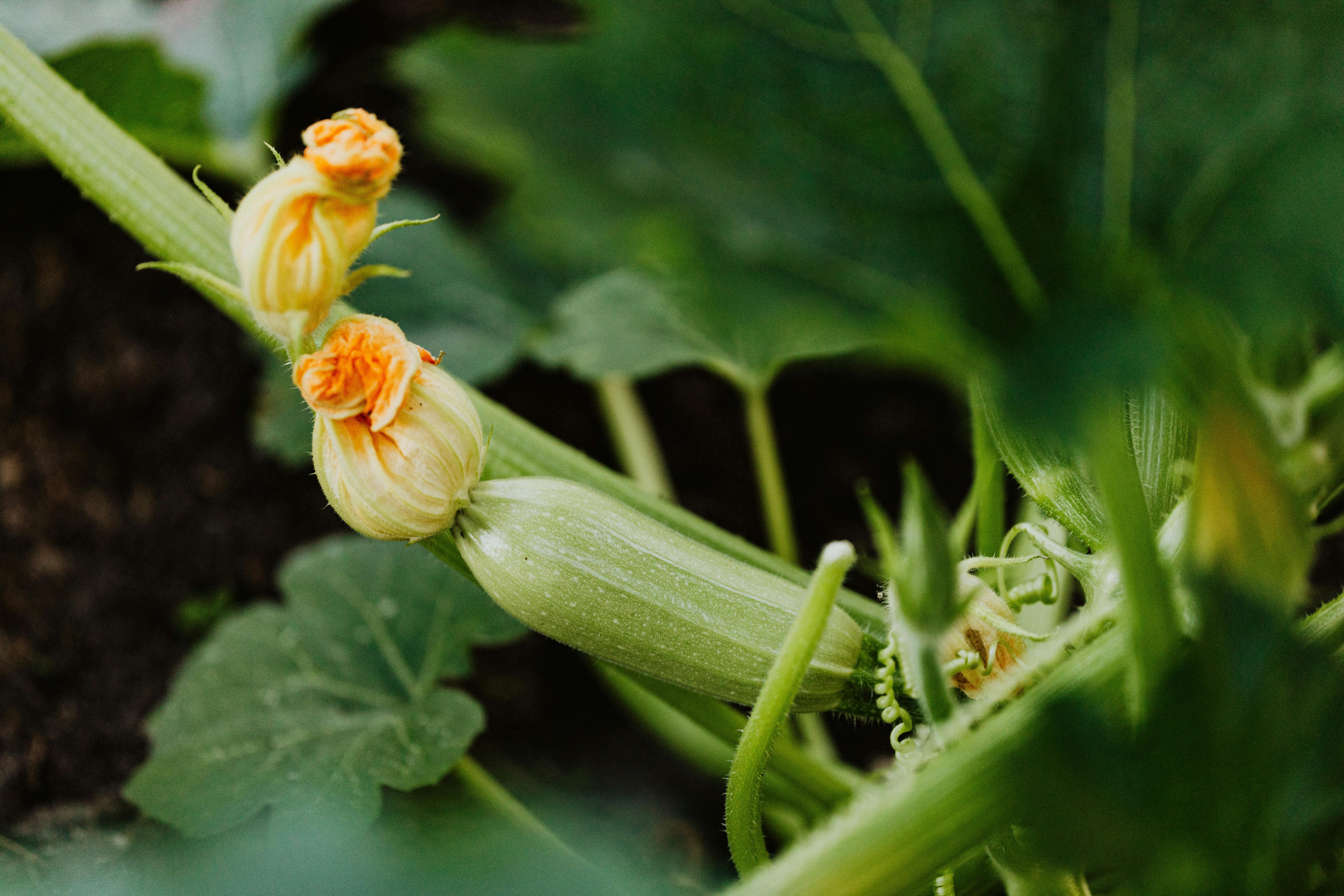Signs That Your Zucchini Plant Is In Trouble
Growing zucchini in your garden can be rewarding but it also comes with some challenges. If you notice any of these signs, it could mean that your zucchini plant is in trouble and needs some attention.
The first sign to look out for is yellowing or wilting leaves. This could be a sign of an environmental issue such as too much or too little water or too much sunlight. It could also be a sign of an underlying disease such as powdery mildew or squash vine borer.
Another sign to watch for is lack of blooms and fruit production. Without blooms, the plant has no way to produce fruit, which means you won’t get the harvest you were hoping for. This can happen if the plant doesn’t get enough nutrients or if there aren’t enough bees around to pollinate the flowers.
Finally, look out for signs of pests such as aphids, cucumber beetles, and squash bugs. These pests can feed on the plant’s leaves and flowers, which can stunt growth and reduce yields. If you see any signs of pests, take immediate action to get rid of them before they do any more damage.
By keeping an eye out for these signs, you can help ensure that your zucchini plant stays healthy and productive all season long!
Inspecting Your Zucchini Plant for Disease or Pest Infestation
It is important to inspect your zucchini plant regularly to make sure it is not suffering from any disease or pest infestation. Disease and pests can cause significant damage to the quality and yield of your zucchini crop. To ensure that your zucchini plant is healthy, here are a few steps you can take to inspect it.
First, check the leaves of the plant for any signs of discoloration or wilting. These could be signs of a fungal infection or other disease, such as powdery mildew. If you see any evidence of these symptoms, take steps to treat the affected area right away.
Secondly, look for any signs of insect damage, such as holes in the leaves or stems. These could be caused by aphids, beetles, or other insects that feed on the plant’s foliage and stems. If you find evidence of an insect infestation, treat it immediately with an appropriate insecticide.
Thirdly, check for any signs of rot on the plant’s stem or fruit. This could be caused by a bacterial infection, which can spread quickly if left untreated. If you suspect there is rot on the stem or fruit, cut away any affected areas and treat them with an appropriate fungicide.
Finally, inspect around the base of the plant for evidence of weeds or other plants growing close by that may be competing with your zucchini for vital nutrients and water. Remove these plants if necessary to ensure your zucchini has enough resources to grow properly and produce a good yield.
To conclude, regular inspection can help you detect disease and pest infestations early on so that they can be treated before they cause serious damage to your zucchini plant. By taking proactive measures now, you can avoid costly problems later in the season when harvesting your crop!
Water Requirements for a Healthy Zucchini Plant
Growing a healthy and productive zucchini plant requires adequate water. Zucchini plants need about 1 to 2 inches of water each week, depending on the climate and soil type. It is best to water zucchini plants early in the morning so that the foliage has time to dry before nightfall. This helps deter fungal diseases from developing. If rainfall is not sufficient, supplemental watering should be provided. Watering should be done slowly and deeply so that the roots can absorb the moisture thoroughly. Too much water can cause root rot, which will kill the plant, so avoid overwatering. A layer of mulch around the base of the plant will help retain moisture and reduce weeds. Monitor soil moisture levels regularly and adjust watering accordingly.

Nutrients Necessary For a Healthy Zucchini Plant
Zucchini plants require a range of essential nutrients in order to grow and thrive. These include nitrogen, phosphorus, potassium, calcium, magnesium, sulfur, and trace elements such as iron, manganese, copper, and zinc. Adequate amounts of these nutrients should be available in the soil for the zucchini plant to absorb during its growth cycle.
Nitrogen is essential for healthy leaf and stem growth and helps the plant produce more flowers and fruits. Phosphorus helps promote strong root growth as well as energy transfer within the plant. Potassium helps strengthen the plant’s cell walls as well as regulate water use by the roots. Calcium is necessary for cell division and production of essential oils while magnesium helps with chlorophyll formation which aids photosynthesis. Sulfur helps promote healthy enzymes within the plant while trace elements like iron are necessary for efficient use of other nutrients like nitrogen.
The best way to ensure that your zucchini plants have access to all these nutrients is by adding organic matter such as compost or aged manure into the soil before planting. This will help provide a steady supply of nutrients throughout the growing season. Additionally, adding fertilizers or soil amendments with specific nutrient ratios can help supplement any deficiencies in your soil and provide additional nutritional benefits to your plants.
Proper Pruning and Fertilizing Techniques for Growing Zucchinis
Growing zucchinis can be a rewarding experience for any gardener. To ensure a successful harvest, proper pruning and fertilizing techniques are essential. Pruning is the process of removing dead or damaged leaves, stems, and flowers from the plant to help promote healthy growth. It also helps to keep the plant tidy and free from disease. Fertilizing is also important for healthy zucchini growth as it provides the necessary nutrients for the plants.
When pruning zucchini plants, always use sharp, sterilized pruners or scissors to keep them clean and prevent spreading disease. Start by removing any dead or damaged leaves or stems that may be present on the plant. Be sure not to remove too many leaves as this can cause stress on the plant. Additionally, it is important to remove any flowers that have wilted or died off as this can also cause stress on the plant.
When fertilizing zucchini plants, it is best to use a balanced fertilizer such as 10-10-10 or 5-10-5. The numbers represent nitrogen (N), phosphorus (P) and potassium (K) respectively, which are important nutrients needed by plants. When applying fertilizer, consider using a slow-release formula as this will provide a steady supply of nutrients over time instead of all at once. Additionally, avoid overfertilizing as this can cause an excess of nutrients in the soil which can be harmful to your plants.
Finally, water your zucchini plants regularly in order to keep them properly hydrated throughout their growing season. This will help ensure healthy growth and encourage a bountiful harvest! With proper pruning and fertilizing techniques you should have no problem growing delicious zucchinis in your garden!
Ensuring Adequate Sunlight for Your Zucchini Plants
Growing zucchini plants in your backyard garden can be a rewarding experience. To ensure that your zucchini plants are healthy and productive, it is important to provide them with the right amount of sunlight. Zucchini plants need at least six hours of direct sunlight each day for optimum growth and yield. Without adequate sunlight, the plants may not produce as much fruit or their growth may be stunted.
To provide your zucchini plants with the right amount of sunlight, it is important to choose a site that receives full sun throughout the day. If possible, select an area that does not have any trees or other structures that will shade the area during parts of the day. Additionally, consider planting your zucchini in raised beds or containers if you are unable to find an area with full sun exposure. This will help to ensure that your plants are getting enough sunlight even if some of the light is blocked by nearby structures or trees.
Another way to ensure adequate sunlight for your zucchini plants is by providing supplemental lighting with grow lights during periods when there is not enough natural light available. This can be especially helpful if you live in an area where there are long periods of cloudy days or short winter days when the sun does not shine as brightly. Grow lights can be used indoors or outdoors and they can provide extra light for your plants when needed.
Finally, be sure to keep up with regular maintenance such as pruning and weeding around your zucchini plants so they have plenty of room to receive light from all angles. This will help maximize their exposure to light throughout the day and make sure they receive enough energy for healthy growth and production of fruit.
By following these tips, you can ensure that your zucchini plants get the proper amount of sunlight needed to thrive and produce a bountiful harvest!

Conclusion
The cause of a dying zucchini plant can be any of the above-listed issues. A combination of these problems is also possible. The best way to identify the cause and take corrective measures is to inspect the plant closely, look for signs of pest infestation, over or under watering, nutrient deficiency, and other environmental factors. Once the problem is identified, you can find a suitable solution to revive your zucchini plants.
Gardening takes patience and skill. With proper care and attention, you can ensure that your zucchini plants stay healthy and produce an abundance of fruits for you to enjoy.

